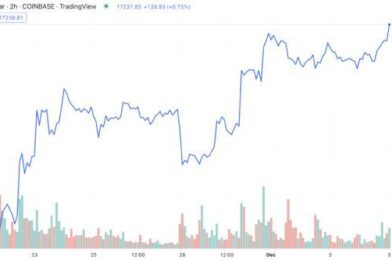Thursday, December 8, 2022
The proliferation of blockchain, cryptocurrency, and decentralized finance (DeFi) applications in recent years has been accompanied by a surge in patent filings worldwide by blockchain tech developers. And, despite some early reluctance of national patent offices to recognize the patentability of these emerging technologies, many national patent law and patent application examination regulations have been revised in recent years to recognize their patentability. This has resulted in thousands of patents being granted worldwide for blockchain, crypto, and DeFi inventions.
A blockchain was created as a transaction ledger for the bitcoin cryptocurrency. Historically, the patent laws in most countries have deemed fintech inventions as patent ineligible business methods for lacking sufficient technical features and being merely mental processes, mathematical formulas, or methods for organizing human activity. However, a blockchain is inherently a technological system. It is a distributed ledger that consists of a growing list of electronic records that are securely linked together using cryptography and managed by a peer-to-peer computer network.
As the popularity of blockchain technology has grown and its application has expanded from the fintech sector to other industries, such as healthcare, transportation, big data, cybersecurity, and consumer electronics patent application filings for blockchain-based inventions skyrocketed worldwide. Recognizing the economic importance of blockchain technology and its inherent technical nature, many national patent offices have also revised their patent laws and examination regulations to ease the eligible subject matter threshold for blockchain inventions.
The following is a survey of national patent laws and regulations pertaining to the examination of blockchain, crypto, and DeFi technologies in the most popular patent filing jurisdictions:
United States
The United States has historically been one of the most patent friendly countries in the world. Not surprisingly, the earliest patents for blockchain inventions were granted in the US due to the strict interpretation of patent eligible subject matter defined in 35 USC 101 with respect to software and business methods, in which blockchain applications are typically classified, and the confusion caused by several different tests for patent eligibility promulgated by courts, prosecution of blockchain applications at the US Patent Office became quite challenging.
Recognizing these problems, the Patent Office published the 2019 Revised Patent Subject Matter Eligibility Guidance (here is our analysis of the guidance), which provided a structured framework for evaluating software and business methods. The guidance effectively eased the scrutiny with which blockchain-related applications were treated with and provided clarity as to patent eligibility criteria for crypto, DeFi, and fintech inventions. Currently, there are nearly 30,000 patent applications and over 10,000 patents in the US for blockchain-based inventions.
China
Due to rapid growth of crypto mining farms, e-commerce business, and fintech start-ups in China, the number of patent applications for blockchain, crypto, and DeFi inventions has exploded in recent years. Some of China’s largest e-commerce and Internet companies, such as Alibaba Group and Tencent Holdings, lead the world with thousands of granted blockchain patents.
Recognizing the importance of blockchain and fintech technologies to its economy, the Chinese government called for corporations to accelerate development of blockchain technologies in 2019. Later that year, the National Intellectual Property Administration (NIPA) in China further revised its patent examination guidelines to include examples of blockchain methods – further easing the examination process for blockchain technology applicants. Currently, there are nearly 35,000 applications and about 9,000 patents in China for blockchain, crypto, and DeFi inventions.
Europe
The European Union has traditionally been more challenging than the United States and China in its treatment of business-related inventions. The European Patent Office (EPO), according to guidelines in section G-VII, 5, deems an application patentable if its claims define a technical solution to a technical problem, and make non-obvious technical contributions over the prior art. The EPO recognizes that a blockchain is a multi-disciplinary technology and that patent applications may include claim features related to networks, computing, and communications – typically deemed “technical” – and claim features related to mathematics and business methods – typically deemed “non-technical.” Accordingly, to improve chances of obtaining a patent in Europe, applications for blockchain, crypto, or DeFi solutions should minimize their focus on non-technical features and emphasize technical aspects of the invention. To date, approximately 2000 European applications have been filed for blockchain technologies, and about 500 patents have been granted.
Japan
While business methods in Europe are not given much favor, the Japanese Patent Office (JPO) is relatively lenient for these types of applications. Despite the Japanese Patent Act following a similar framework as the EPO guidelines in terms of distinguishing technical and non-technical features, the Japanese allowance rate for business-related inventions, which umbrella blockchain-related inventions, is over 50%. This does not mean that any blockchain-related application is automatically patent eligible in Japan. For example, the data within a blockchain is unpatentable. However, a device, a method, and/or a program for implementing a process using blockchain/crypto is generally considered patent eligible by the JPO. To date, there are approximately 1700 patents in Japan for blockchain, crypto, and DeFi inventions.
South Korea
Similar to Japan and China, South Korean patent laws view blockchain-based technology quite favorably. In accordance with Article 29(1), Article 29(1)ii, and Article 29(2) of the Korean Patent Act, both blockchain core technology and application technology are patentable. Core technology covers the transmissions or transactions of data involving the use of blockchain/crypto and application technology covers the use of blockchain networks in the context of finance, security, cryptocurrencies, etc. Because both aspects of blockchain technology are deemed patent eligible, South Korea is generally a favorable country for blockchain, crypto, and DeFi patent applications. It is thus not surprising that the number of patent filings in South Korea has grown exponentially from several dozen blockchain-related patent applications in 2015 to nearly 1500 applications in 2019.
Blockchain, crypto, and DeFi technologies provide ample opportunity for innovation as evidenced by thousands of patent applications filed worldwide for these cutting-edge technologies. The rapidly growing number of patents issued for these technologies in the United States, China, Japan, South Korea, and even Europe indicate that the majority of patent filing jurisdictions look favorably on the patentability of blockchain-based technologies. However, to maximize the chances of obtaining a patent for these technologies, inventors and their patent attorneys should be aware of different patent eligibility requirements and standards of various national patent offices and employ correct patent application drafting and prosecution strategies.



